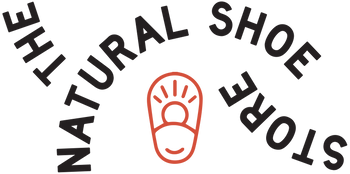Dale Hardiman is a Victorian designer and founder of design studio Lab De Stu. His exploration of form and work with polymer clay has propelled him into the foreground of innovative art.
Duckfeet: Hi Dale, how are you?
Dale: Fantastic thank you!
Thanks for being a part of DuckFeatures, you’re pretty busy at the moment. Tell us a bit about your work.
My work spans furniture, lighting, home-wares, materials, exhibition, teaching and over the past 2 years, curating. I’m not quite sure how to explain my work exactly! Sometimes I feel as though I have a short attention span, and that’s why I jump around so many products at the same time. Although what I think it really is, is the love of design and the love of collaborating with others.
I grew up in Bendigo and moved to Melbourne 5 years ago to study at RMIT. I never thought I’d end up doing what I do now. I started studying furniture because I was interested in sculpture at the time, and it seemed like the two could work well together.

Your designs reflect beautiful colour and a natural, clean aesthetic; from where do you draw inspiration?
My inspiration comes from everyday objects and manufacturing processes. My intention has never been to really produce work of a singular aesthetic, as I really like the freedom in being able to produce an exhibition like Irregular Forms, then produce a sand-cast aluminium stool 2 years later (Swing Stool). The one big thing I love about being in the design industry is seeing how objects are made. Going to factories that are producing something as simple as shoe soles can translate into something completely different from a design perspective.
A few of your projects like Irregular Forms feature polymer, why do you use this medium? It looks pretty tricky to shape!
Irregular forms, Polly Popper and Polly all started as a university projects wherein I was working on a group of furniture objects joined together from biodegradable materials.
The material (at the time) suited my particular process perfectly. It could be produced from my kitchen, and required no cost in tooling or moulds (the Polly moulds are glasses, ceramic bowls and cups from op-shops). It’s surprisingly easy! Andre Hnatojko and I are now beginning to produce the Polly Popper light in quantity (the first batch going to Country Road) and they’re much bigger then everything else I’ve ever done (besides Polly Popper for Melbourne Now at the NGV, that took 5 people!).


We enjoy your work with lighting design; Mr. Dowel Jones is one of our favourite pieces, and we can’t forget your collaboration with jewelry gem Emily Green. What draws you to this area of design?
It’s all completely unintentional! Projects lend themselves to particular typologies
Mr. Dowel Jones was designed as a way of problem solving my own issue of not having enough desk space. My desk wasn’t very deep at the time, so I made myself a desk lamp from hard rubbish with tripod legs, to make more room around it. Another reason I like working with lighting is that you don’t come across the same issues when designing a chair, stool or table. A light doesn’t need to be comfortable or take any weight!
Emily Green and I worked on UP UP for 18 months before we launched the product, and we came about the idea of a light because they suited her bead making process and could fit around a lighting cord perfectly.
You’ve recently collaborated with Mathery Studio to bring us the HI Hangers. What spurred the idea to recreate the everyday clothes hanger?
The concept came to us as we were having coffee once; we knew we had to work on a project together, so we sat down and started talking about the particular aesthetic we wanted to achieve. Clothes hangers seemed like fun objects to work on with a lot of room for redesign.
Our first idea was based on the I (the one with the hanger on it), and the way in which during a fashion show someone could hold the I against their chest, and present the clothes on the hangers instead of on themselves. The H was an obvious development of the product as the more commercial version – we still have many more extensions of the product to come in the future!


What’s up next for you? Are there any projects we can eagerly await?
Lots of new products! We have bags being released before Christmas, a new stool, light, and even a foray into a completely different discipline next year!
Thanks for having a chat to us Dale, see you again soon.
No worries!
Want to know more?
Instagram: @labdestu
Facebook: www.facebook.com/LABDESTU
Twitter: www.twitter.com/LABDESTU
Web: http://labdestu.com.au

